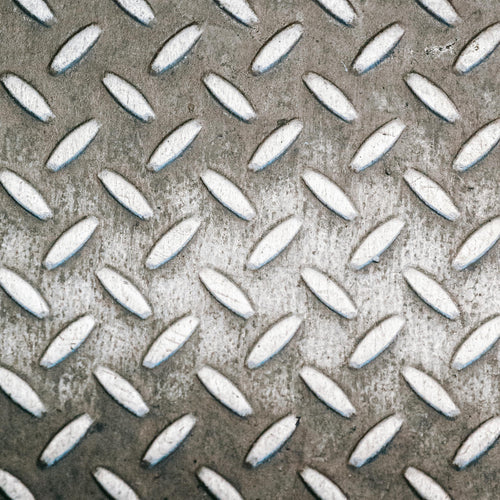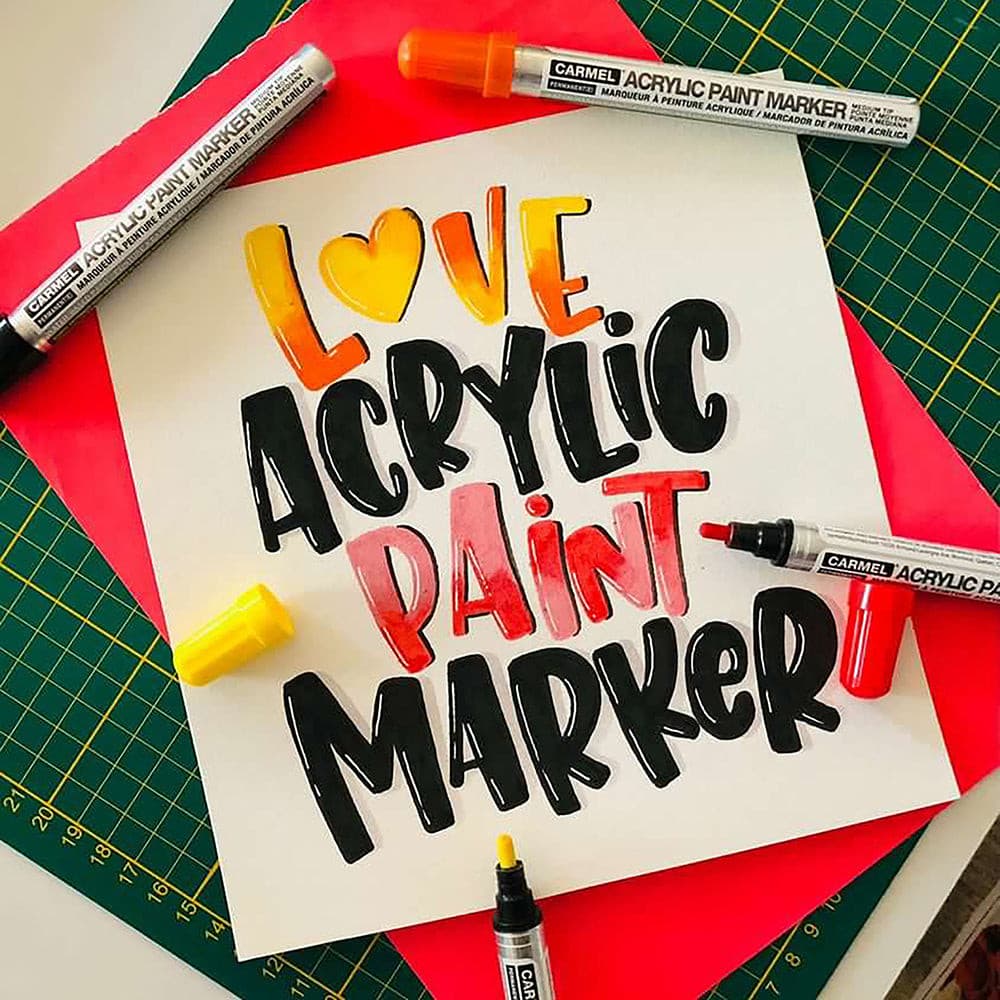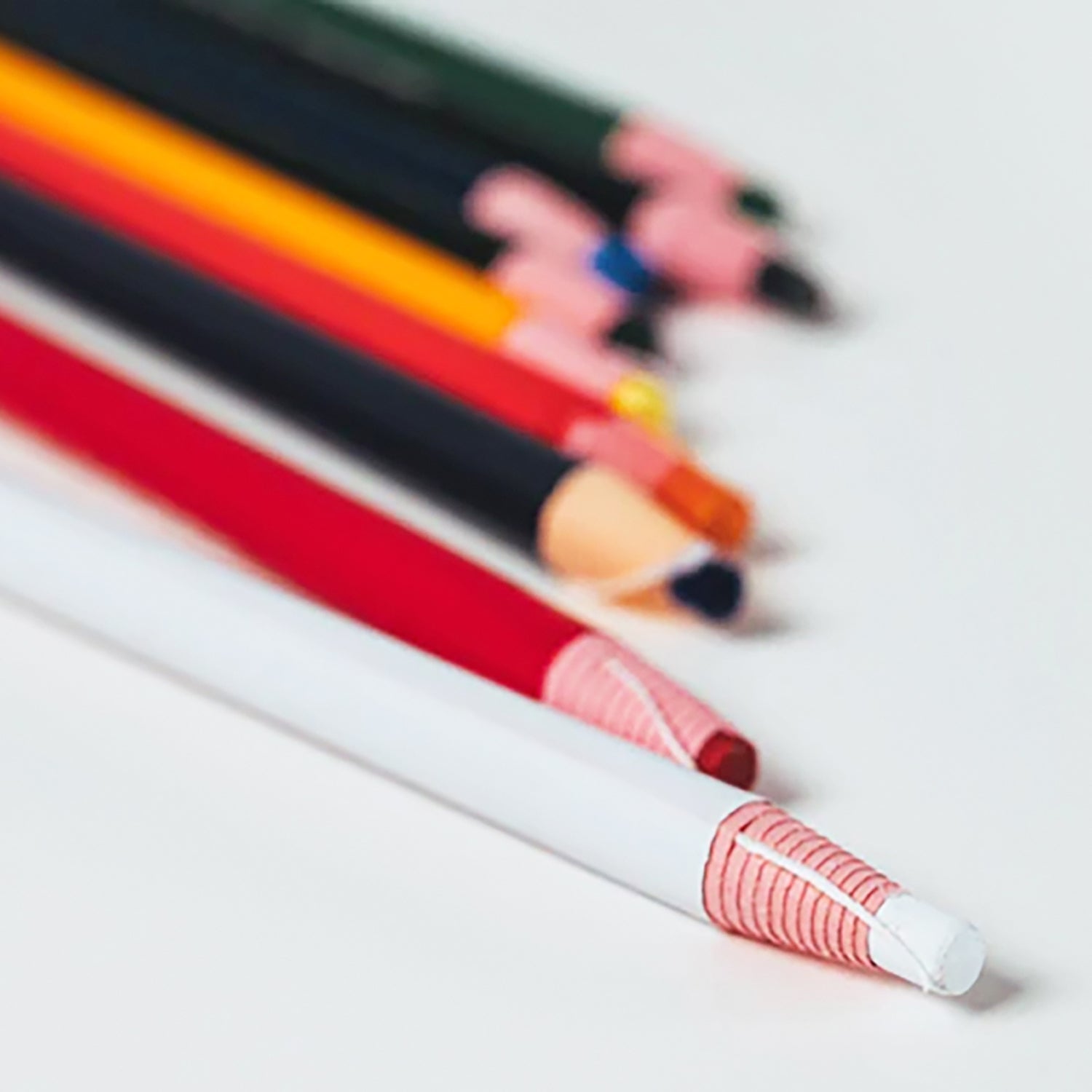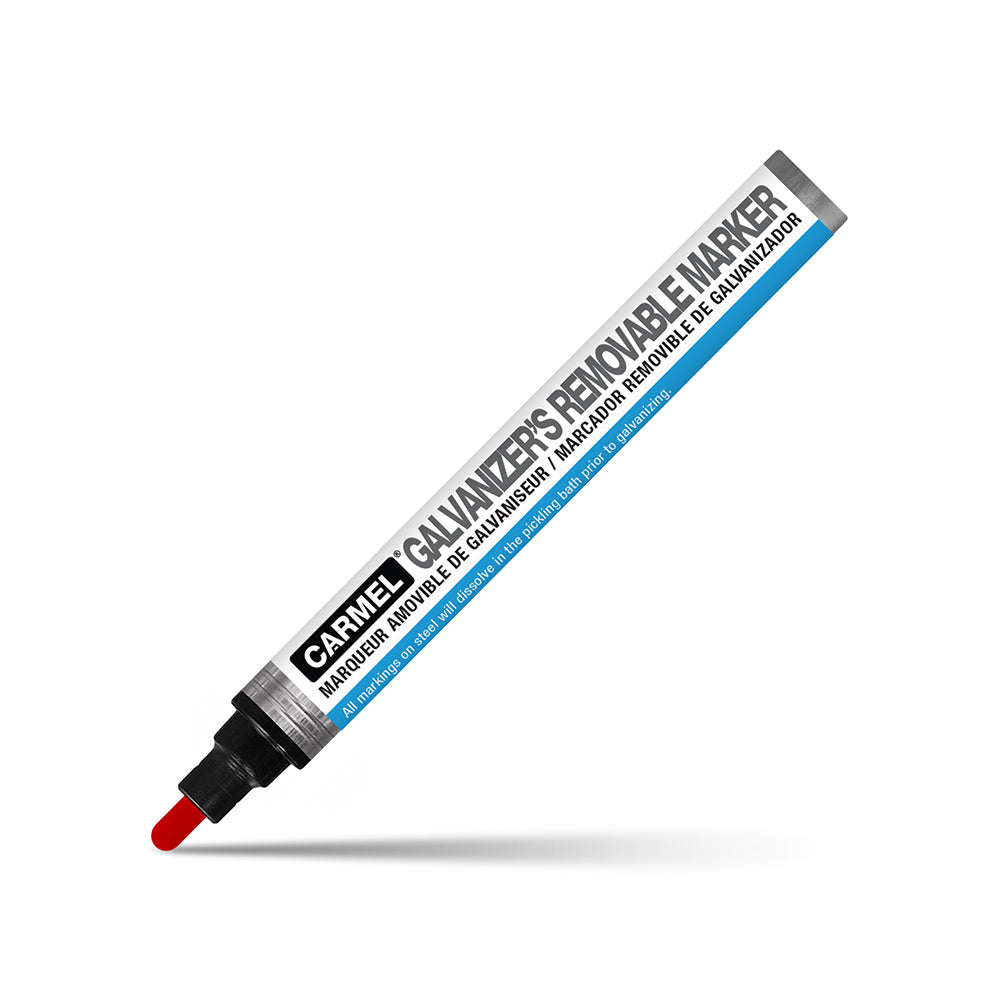The most basic name for this marking tool is grease pencil. It looks like a pencil, you draw or write with it like a pencil, but its core is made of a soft, greasy wax, commonly wrapped in paper rather than encased in wood
Whether you’re currently involved in arts and crafts or liked to draw as a kid, you’ve probably come across a grease pencil at some point in your life. Known by many names such as China Marker, wax pencil and chinagraph, a grease pencil is a unique tool that on first glance seems like a cross between a pencil and a wax crayon.

Even if you haven’t seen one in years, you’d recognize it instantly: it looks like a pencil with a large waxy nib surrounded by layers paper. Do you remember pulling the string to unwrap the paper and expose the core? That’s how you “sharpened” a standard grease pencil – and that’s why they are sometimes called pull-string pencils.
What’s with all the different names?
The most basic name for this marking tool is grease pencil. It looks like a pencil, you draw or write with it like a pencil, but its core is made of a soft, greasy wax, commonly wrapped in paper rather than encased in wood.
The most popular alternate name for these products is China marker. This doesn’t mean they originate in China but rather that they are commonly used to mark smooth, shiny and non-porous surfaces like China or porcelain.
Another name you might encounter is chinagraph pencil, which is used primarily in the U.K. Many of these terms are interchangeable, which can get confusing. You can find wax pencils, China marker pencils, chinagraphs or grease pencils, but they essentially refer to the same thing in most cases.
 What are China markers/grease pencils used for?
What are China markers/grease pencils used for?
Grease pencils are most often used for marking a variety of surfaces in commercial and industrial applications. They work best on smooth or polished surfaces – everything from glass to PET (blow molded) bottles to polished stone, ceramics and metals like brass or stainless steel.
Common commercial uses include writing prices on porcelain dinnerware like plates, cups, and jugs, or writing on glassware. China markers are also used to mark a variety of media such as vinyl records, analog audio tape, and photographic contact sheets. They are also frequently used as a marking tool in the construction industry since they don’t normally damage the surface they are applied to, and can be used to mark wet surfaces.
Finally, china markers or grease pencils are often used in the art world, especially for homemade arts and crafts projects. They can mark paper surfaces, and work well on paper with a glossy finish.
What are the benefits of china markers/grease pencils?
Overall, grease pencils are relatively affordable and flexible marking tools that can be used to mark a variety of surfaces, and have some specialized uses to boot. They are also available in a wide variety of colors.

What are some of the issues with standard grease pencils/China markers?
The most common issue associated with standard pull-string grease pencils is their fragility. Since they are essentially composed of a soft greasy core surrounded by paper, they can break easily.
Also, the process of revealing the waxy core as you use the China marker can be a bit complicated to get right. Essentially, you must pull a string to break the outer paper seal, then unravel the tightly wound paper around the core as needed. The process itself can damage the pencil’s core if it’s not done properly. Fortunately, there are other varieties of China markers available that address these issues.
What are the different types of china markers/grease pencils?
In the old days, you were probably stuck with the classic pull-string pencils with cores wrapped in paper. Today there are a few different types of grease pencils on the market.
The mechanical grease pencil addresses the issue of fragility associated with the classic paper-wrapped style. With this product, you get the benefit of a sturdy tube that holds and dispenses the waxy cores as you need them.
When you’re using a mechanical grease pencil, there’s no messing with strings or unwrapping paper, and your core won’t break as easily. Plus, mechanical grease pencils are refillable, making them an economical option in the long run. These products are sometimes referred to as clutch pencils or Retractable Grease Pencils.
You can buy an empty mechanical grease pencil holder and find whatever cores you need sold separately in a variety of colours. These cores are also referred to as “Grease Pencil Leads” which might remind you of lead pencils (fun fact: lead pencils were actually never made with lead – they mainly contain graphite)
Grease pencil leads don’t contain lead or graphite and aren’t as hard – they are made from the same non-toxic wax substance that you would find in any china marker.
There’s also a grease pencil that is built more like a classic pencil – that is, a soft core encased in wood. These are sometimes called Uni Pencils. This is another durable type of grease pencil, and can be sharpened like a regular pencil. Note that these shouldn’t be confused with standard pencil crayons. Grease pencil cores are made from a different type of wax and their markings are generally more durable.

The takeaway: should you buy a grease pencil?
If you need to make durable, opaque markings on smooth surfaces that you can easily wipe off, China markers or grease pencils are an indispensable tool. They go on smoothly and can also be used on a wide variety of surfaces. Finally, with the convenience of mechanical or clutch pencils, there’s even more reason to invest in this dependable product.


















2 comments
Nigel Matson
Hi. My mum, age 89 is an artist, and is currently doing some artwork on china. She needs to know how to prevent the chinagraph pencil art work from rubbing off. (i.e. how to make it permanent on the pottery). is there some treatment she can use (heat maybe), or can one spray on a clear varnish or something?
Hi. My mum, age 89 is an artist, and is currently doing some artwork on china. She needs to know how to prevent the chinagraph pencil art work from rubbing off. (i.e. how to make it permanent on the pottery). is there some treatment she can use (heat maybe), or can one spray on a clear varnish or something?
Brenda
trying to eliminate as much plastic as I can live without so my question is what would be an alternative to use on a white board that erases easily. I use a wax pencil on garden markers and thought that may work on a white board.
trying to eliminate as much plastic as I can live without so my question is what would be an alternative to use on a white board that erases easily. I use a wax pencil on garden markers and thought that may work on a white board.